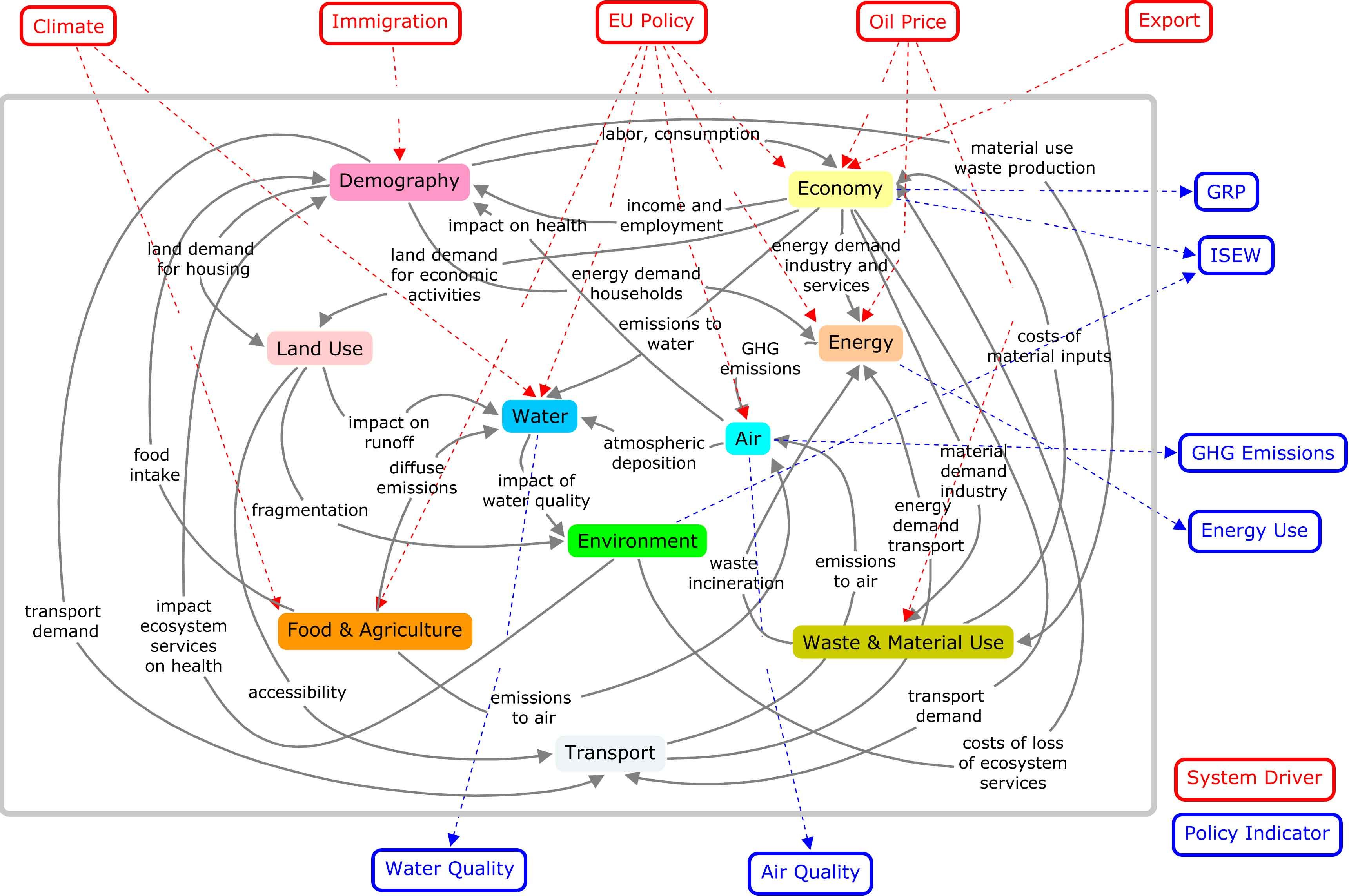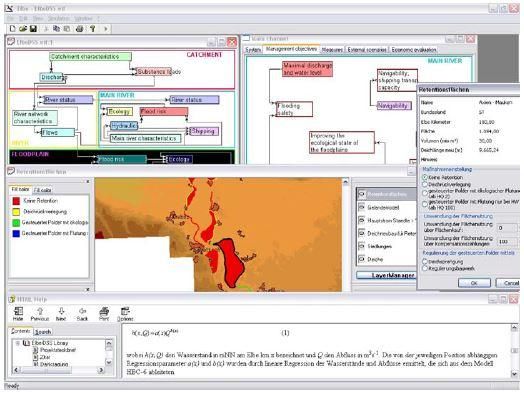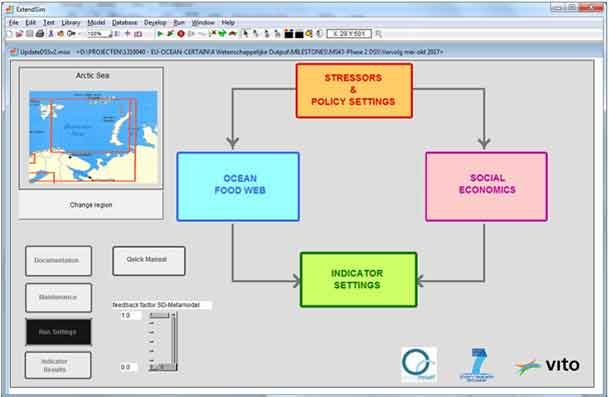To pave the way for sustainability VITO develops practical, end-user oriented tools for policy analysis. One of these tools is System-Dynamics Modelling: a technique to visualise and analyse the complexity of multiple, interacting themes ranging from population growth, economic development, mobility, energy use, and environmental change to water management.
Connection between themes
System Dynamics (SD) models provide a natural framework for describing and analyzing the time-dependent development of complex systems at the policy level of analysis. A system-dynamic model makes it possible to consistently describe the main interactions between different themes (economy, demography, energy and land use, etc.). The model does not focus on the details of the processes involved, but on the feedback structure of the system as a whole, and the impact on the dynamic behavior of the system. This can result in typical behavior such as ‘tipping points’, where the system changes from an equilibrium to a non-equilibrium state.
Crucial for long-term decisions
The emphasis lies with a sufficiently complete representation of the system and these feedback mechanisms rather than details used to describe the subsectors. This makes it possible to analye different combinations of environmental and policy scenarios in a coherent manner, and to determine the mid- and long-term impacts of the different alternatives. A high degree of consistency, flexibility, transparency and computational speed are typical characteristics. The graphical setup of SD models, allowing for interactive use, give these models an added value when working with stakeholders and end users.
Our expertise
VITO converts complex problems – that have an impact on a number of themes – into system-dynamic models in outline. Commissioned by the Flemish Environment Agency, the Environmental Reporting Department (MIRA), we developed a System Dynamics model for the Region of Flanders.
Decision-Support Systems
Decision Support Systems (DSS) are a class of computer-based information systems including knowledge-based systems that support decision-making activities. Typically three essential components can be distinguished (Calewaert et al., 2007): end users, knowledge and technology. DSS gained attraction in the planning and environmental management community in the early 1990s when many initiatives aimed at developing DSS began in a variety of domains, including integrated coastal zone management (Westmacott, 2001; Engelen et al; 2003; De Kok et al., 2009), river basin management (Oxley et al., 2004; Van Delden et al, 2007) and urban and regional planning (Geertman and Stillwell, 2003).
VITO experts deliver practical designs and models, which policy makers use to analyse, compare and prepare management strategies.
User-friendly, flexible and fast
By themselves, the existing scientific models are insufficient to address the role of stakeholders and complex feedback mechanisms between ecosystems, driving pressures, and social-cultural factors. In addition, these models are often less adapted for interactive use, and cannot provide quick answers needed for evidence-based decision making and the day-to-day practice of decision making. The essential conditions for succesful Decision-Support Systems (DSS) are: user-friendliness, transparency and flexibility for adaptations in order to cope with changing conditions and demands of end users and stakeholders.
Usable policy-support systems
The unique collaboration of scientific experts, IT professionals, stakeholders, and communication experts helps translate complex environmental and decision problems into practical, end-user oriented policy-support systems The central aim is always to consistently bridge the gap between domain experts, policy makers and end users. This is done bearing in mind the need to produce an operational system that can actually be used in practice. VITO is a well-established expert in the organisation and guidance of interactive workshops with end users and interested parties, with a wide portfolio of applications, ranging from water management and spatial optimization to climate adaptation.
References
Examples of systems that VITO experts were involved in creating: an inventory tool for pollutant emissions in water courses (WEISS), SOLUTIONS) and tools for integral river management (Elbe DSS, Schelde), sustainable agriculture (MultiMode) and climate adaptation (OCEAN-CERTAIN). In addition to stand-alone tools, VITO also develops web applications, such as the interactive indicator atlas and a web tool for examining algal growth in the SouthernNorth Sea.




